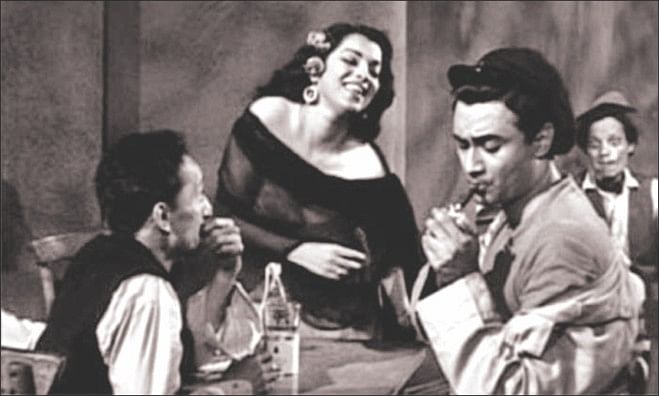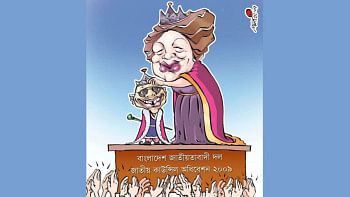Indian 'Film Noir'

“Strangers in the night exchanging glances; wandering in the night what are the chances; we'd be sharing love before the night was throughhhh; something in the eyes so inviting, something in the smile so exciting; something in my heart told me I must have youuuuuuu” -- that was Frank Sinatra in the mid-sixties. If you happen to be one of those into movies, then close your eyes for a minute and try to perceive the scenes with this song in the background. Images such as urban rain-soaked cobbled streets, seedy taverns, run-down buildings, flickering street lamps, blinking neons of sleazy joints emerge, covering sections of New York, Chicago, Los Angeles and London. Here the criminal underworld, sex, hopelessness, corruption still live side by side. Movies like “The Naked City” and “Third Man” (later serials) also engulf our mind. The French critics, Nino Frank and Jean-Pierre Chartier in 1946 used the term, 'Film Noir', ('Black Cinema' in French) for those Hollywood productions of the forties, with reference to the low-keyed lighting used to tell stories saturated with a darkness and cynicism that was not seen before (the definition of film noir has now somewhat changed). All these had a common style of storytelling. Intricate plots, highly stylised, overtly theatrical with ideas drawn from the era of German “expressionist” cinema are the key features of these films. In the subcontinent, truly such style of filmmaking was initiated by that debonair of the fifties and sixties, Dev Anand and his buddy Guru Dutt with “Baazi” as far back as 1951. The film had all the above elements, plus the typical Indian song-dance sequences, a must ingredient for Bollywood films then deeply influenced by Hollywood musicals of the '20s and '30s.
The plot of “Baazi” was pretty ordinary but its execution made all the difference. There was this tramp, a scoundrel, a have-not on the wrong side of law but with a heart of gold, who gets associated with a gang lord. He is fancied by a seductive night club singer-cum-dancer and loved by an idealistic doctor just like the character created in Hollywood noirs. It was so effective that sympathies for or against him kept shifting. A hero with flaws and the ability to challenge our sympathies while never push us into dislike.
Dev Anand, the male protagonist though looked weak initially compared to the Hollywood film noir characters recovered soon to steal the show -- first as the poor, naive youth and then as the suave, super gambler making his way from rags to riches. The 'femme fatale', Geeta Bali naughtily carries herself well but is far from being dangerous. Her appearance and overt sexuality unsettle all except the hero. Though her rendition of “Taqdir se bigdi huyi'” was provocative, it later turned to be a signal of desperate plea for help and release. Kalpana Kartik in her debut as the simple-laced woman had little to do in her role but 'sang' two beautiful songs, “Yeh kaun aaya” and “Aaj ki raat piya”.
“Baazi” crackled with sharp dialogue and striking photography by V Ratra accentuated the decadent atmosphere. Snappy, jazzy, beautiful and sensuous songs through the vocals of Geeta Dutt labeled earlier as the wailing singer put her a few notches above Lata Mangeshkar, who was not considered for the film. Exquisite night club dances worked as narratives, highly Indianised though, including the immensely popular numbers, “Suno gazar kiya gaye”, “Sharmaye tum, ghabraye hum” and the fascinating umbrella piece, “Tick tick, tick, tick tick, oui”, not to forget Kishore Kumar's first, “Lara lappa” solo for Dev Anand, “Tere tiro chhupay pyar ka khazaney hai”.
It was Guru Dutt's first as a film director that left enough indications that he would be a man in focus, along with Bimal Roy for the must-see films of India, long before Satyajit Ray entered the world of cinema. He succeeded with panache leaving no stone unturned to let cine-goers know that his work was inspired by John Huston and Fritz Lang. His close-up shots with a 100mm lens soon became known in Indian movie-making as the 'Guru Dutt shot'. “Baazi”, though in the shadows of Hollywood, was one of Bombay's major artistic movements. It was also the platform of some of the most talented men of Bollywood. Apart from Guru Dutt and Dev Anand, 'brands' like Sachin Dev Burman, Sahir Ludhianvi, Balraj Sahni and V Ratra surfaced. Dev Anand recalled: “I was coming out of the premiere and purposely threw the beret cap that I had worn in the film in the air with a great force and bravado. Young girls in numbers shrieked and ran for it. A pretty one grabbed it, threw a flying kiss at me and ran. Decades later at a clinic in Bombay, a young girl asked for my autograph proudly saying that her grandmother was my greatest fan and still preserved the cap that I sent flying into the air and her last desire was to meet me before her death. That's what 'Baazi' did to me.”
The film had some minor glitches that can be overlooked. Its length, which was long by present standards and style of film making, and therefore bit of a drag occasionally. But that was what the Indian public demanded those days: longer the films, the better. A few years later, Guru Dutt produced “CID”, another Indian film noir, this time to rank amongst the world of noir classics. Directed by Raj Khosla and photographed by VK Murthy, with Dev Anand in the lead ... all with the “Baazi” experience.
The writer is a film and music buff.

 For all latest news, follow The Daily Star's Google News channel.
For all latest news, follow The Daily Star's Google News channel. 



Comments